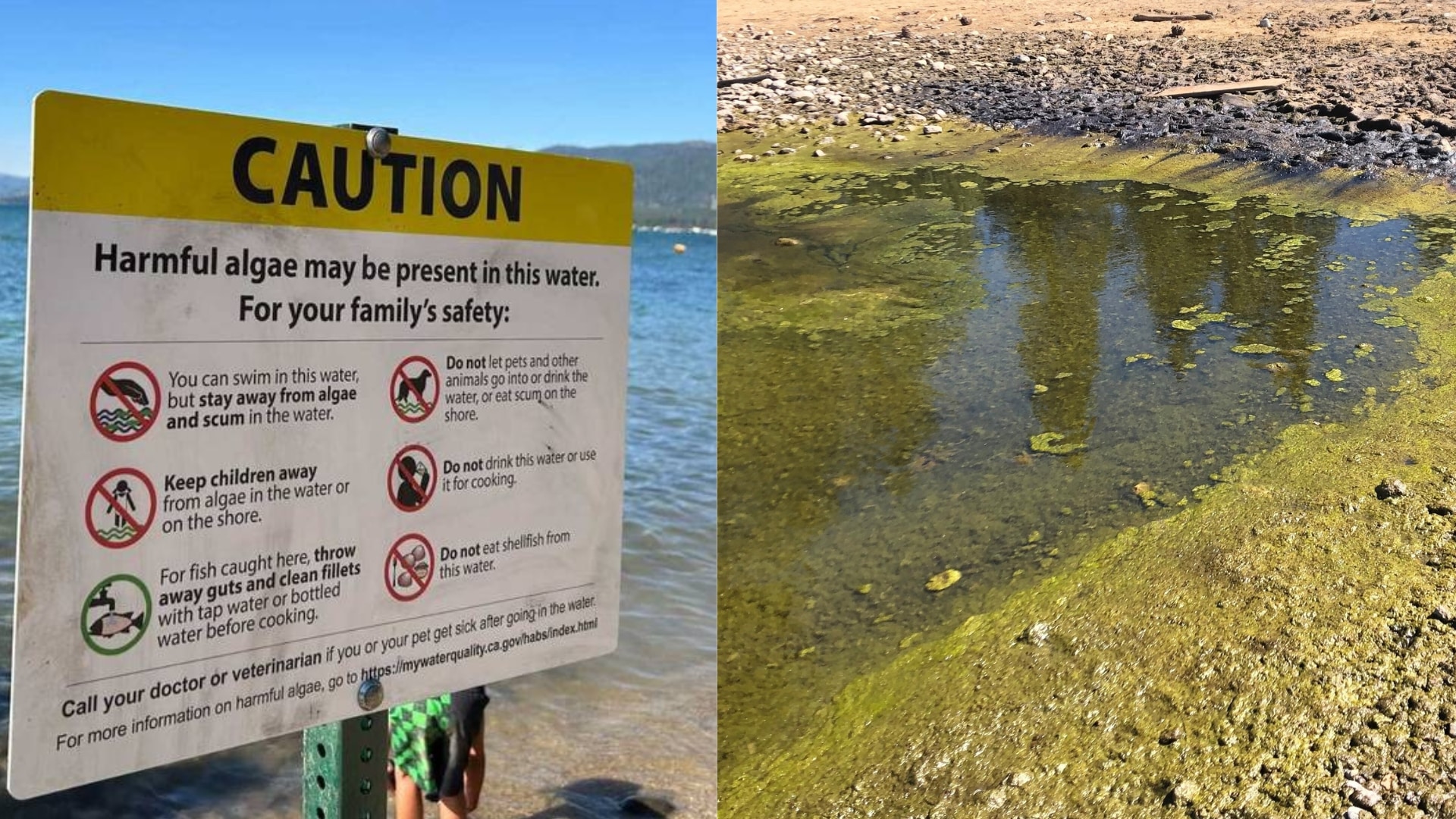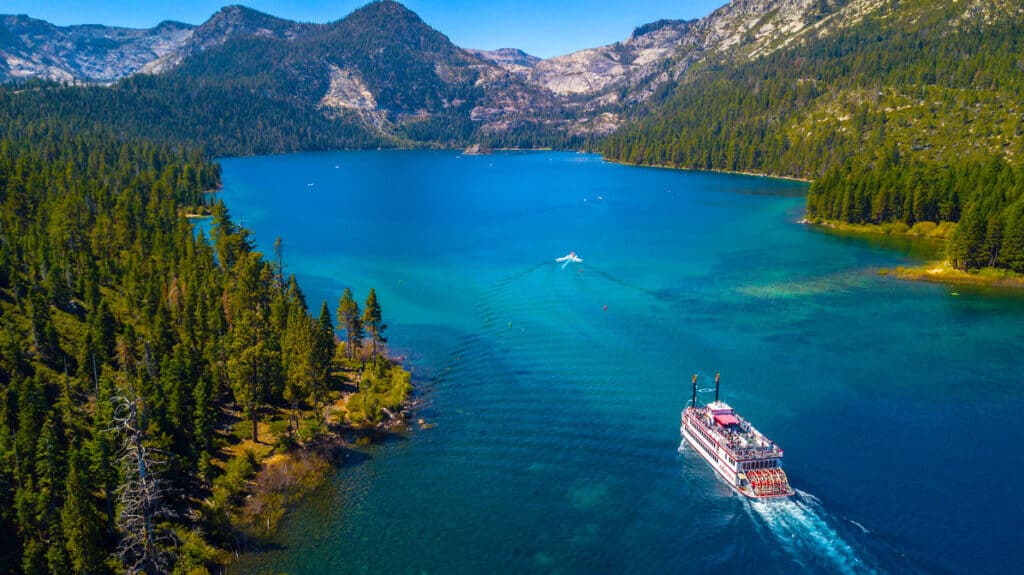Blue-green algae, or tiny organisms called cyanobacteria, are a growing concern in freshwater systems worldwide. Blue-green algae naturally occur in many aquatic environments and are a normal part of the ecosystem. Cyanotoxins produced by cyanobacteria cannot be visually detected in water or tissues. In the ecosystem blue-green algae Lake Tahoe, play a fundamental role, contributing to the natural biological and chemical processes that sustain the lake. These algal organisms are among the tiny organisms that form the base of many food webs in freshwater systems, supporting aquatic ecosystem and highlighting the interconnectedness of organisms within the lake. While some algal organisms are harmless and support aquatic food webs, under certain conditions, they can proliferate and become harmful.
Climate Drivers of Harmful Algal Blooms
Cyanobacteria thrive in warm, nutrient-rich, and slow-moving water bodies. Rising temperatures, along with warmer temperatures during summer months, changes in precipitation patterns, and prolonged droughts. All of these factors, contribute to stagnant water conditions and increase nutrient concentrations. In particular nitrogen and phosphorus. These nutrients can come from various sources:
- Urban and agricultural runoff
- Stormwater discharges
- Faulty septic systems
- Natural soil erosion
Current research suggests that changing precipitation events and other climate-related precipitation events are common factors contributing to the increased frequency and severity of harmful algal blooms. Such changes in hydrology, intensified by climate change, fuel more frequent and severe bloom events.
Environmental Conditions That Trigger Blooms
The main environmental drivers that lead to harmful algal bloom formation include:
- Elevated water temperatures that enhance cyanobacterial metabolism
- Still or poorly circulating waters that allow colonies to accumulate
- Excessive nutrient input, especially phosphorus and nitrogen
- Degraded shorelines and loss of riparian buffers that would otherwise filter runoff
Link Between Wastewater Nutrients and Lake Tahoe:
On July 2024, a sewer pipe ruptured and spilled 85,000 gallons of raw sewage into the lake before cleanup efforts.Though the main cause of HABs remains nutrient runoff and warming water, even small nutrient inputs, including from stormwater or accidental sewage leaks, can fuel blooms over time. Blue green algae can often appear as thick paint or thick paint floating on the water’s surface. These blooms may form visible sheens or mats directly on the water’s surface, making them easier to identify. Algal mats and filamentous algae are commonly observed along shallow shorelines, where they may form dense, stringy, or mat-like structures. Strong winds or currents can dislodge algal mats from the lake or river bottom, causing them to float or wash ashore. Monitoring these areas is important, as the presence of algal mats, thick paint-like layers, or filamentous algae can indicate bloom activity and potential health risks.
These conditions make wastewater and water resource managers increasingly vulnerable to bloom-related disruptions.

The Role of Wastewater in Algae Proliferation
Wastewater treatment systems can play both a role in causing and mitigating blue-green algae. Nutrient discharges from insufficiently treated wastewater, especially from overloaded or outdated facilities, can exacerbate bloom conditions. Even small discharges into lakes, rivers, or reservoirs can alter nutrient balances over time. Water quality managers often rely on a sample collected from affected areas to monitor nutrient levels and the presence of harmful algal blooms, as each sample collected is crucial for detecting toxins and informing public safety measures. When collecting water samples or handling potentially contaminated materials, it is important to wear gloves to minimize exposure to toxins.
Monitoring for harmful algal blooms is conducted by several state agencies in Nevada, including visual assessments and water sampling. The Water Board conducts routine testing for HABs at popular Lake Tahoe beaches prior to major summer holidays. The Water Board relies on scientific data and public reports to guide their response and public safety actions. Water board tests are conducted routinely at specific locations, especially before major holidays, to monitor for harmful algal blooms and ensure water quality. The Nevada Division of Environmental Protection conducts water testing, shares HAB updates, and issues advisories for HABs in surrounding lakes on surface water.
Modern Climate-Sensitive Wastewater Management Aims To:
- Improve nutrient removal efficiency using advanced treatment technologies
- Capture and recycle nutrients rather than discharging them
- Integrate nature-based solutions such as constructed wetlands for polishing effluent
- Adapt infrastructure to weather extremes including flood resilience and temperature regulation
- Continuously monitors water quality to detect early signs of bloom formation
Sustainable Approaches for Algae Control
To combat harmful algal blooms sustainably, water managers increasingly turn to solutions that do not rely on chemicals or heavy infrastructure. One such method is ultrasound technology, which controls algae by emitting specific ultrasonic frequencies that disrupt algal buoyancy regulation and reproductive processes.
Ultrasound-based treatments, such as those deployed by LG Sonic, offer several climate- and eco-friendly advantages:
- No chemical inputs, reducing secondary pollution risks
- Low energy usage, particularly with solar-powered units
- Minimal ecological disturbance, preserving non-target organisms
- Real-time water quality monitoring, enabling proactive management
These systems can be deployed in reservoirs, lakes, and lagoons to manage blooms before they impact drinking water supplies or wastewater operations. Environmental protection agencies and the division of environmental protection often collaborate with land managers to implement sustainable algae control strategies, ensuring effective environmental protection and public health safeguards.
Understanding Lake Tahoe Pollution
Lake Tahoe, long celebrated for its legendary clarity and deep blue color, is increasingly facing a serious environmental challenge. Harmful algal blooms (HABs) driven by blue-green algae, or cyanobacteria are taking over the lake. While naturally occurring algae have always been part of Tahoe’s ecosystem. Recent years have seen a notable uptick in blooms that threaten both ecological integrity and public use of the lake. Despite its reputation as one of the world’s pristine blue lakes, Lake Tahoe is no longer immune to nutrient enrichment and warming waters. Incidents have been confirmed in multiple locations around the lake, including the Tahoe Keys lagoons, Kiva Beach, El Dorado Beach, Kings Beach, and various South Shore sites. In some cases, harmful cyanobacteria concentrations have been severe enough to trigger warnings and beach advisories. These events are no longer isolated; they reflect a broader trend tied to rising temperatures, development pressure, and changing precipitation patterns.
Tragically, in one known case, a dog died after coming into contact with Lake Tahoe’scontaminated water. This incident underscores the real and present danger these blooms pose to animals as well as humans. These aren’t theoretical concerns; they are documented consequences of a shifting freshwater ecosystem under stress. Exposure to cyanotoxins can lead to symptoms ranging from mild skin rashes to serious illness or potentially death. The Lake Tahoe basin has become a focal point for ongoing research and monitoring. With agencies like the Tahoe Science Advisory Council and regional water boards tracking bloom development and nutrient trends.
Initiatives for Lake Tahoe
Save Lake Tahoe and other conservation initiatives are now pushing for stronger actions to reduce nutrient inputs. This is to enhance stormwater management, and increase public awareness. As the frequency and intensity of HABs rise, blue green algae Lake Tahoe have the potential to damage the region’s ecosystem and reputation. The issues observed at Lake Tahoe serve as a case study. It shows how even world-renowned lakes can succumb to ecological pressures. They highlight the urgent need to integrate bloom prevention into climate-sensitive water and wastewater treatment strategies, and to treat these blooms as an ongoing, not hypothetical threat to freshwater systems.
Future Outlook and Recommendations
With climate change projected to intensify the factors driving algal bloom formation, integrating blue-green algae control into wastewater and water quality strategies is essential. Recommendations include:
- Enhancing nutrient removal in wastewater treatment plants.
- Implementing watershed-wide nutrient control programs.
- Deploying non-chemical control technology like ultrasound technology to effectively control algal blooms.
- Monitoring water bodies continuously for early bloom detection.
Public utilities, environmental agencies, and technology providers must collaborate to create resilient water management systems that address both today’s bloom events and tomorrow’s climate challenges.
